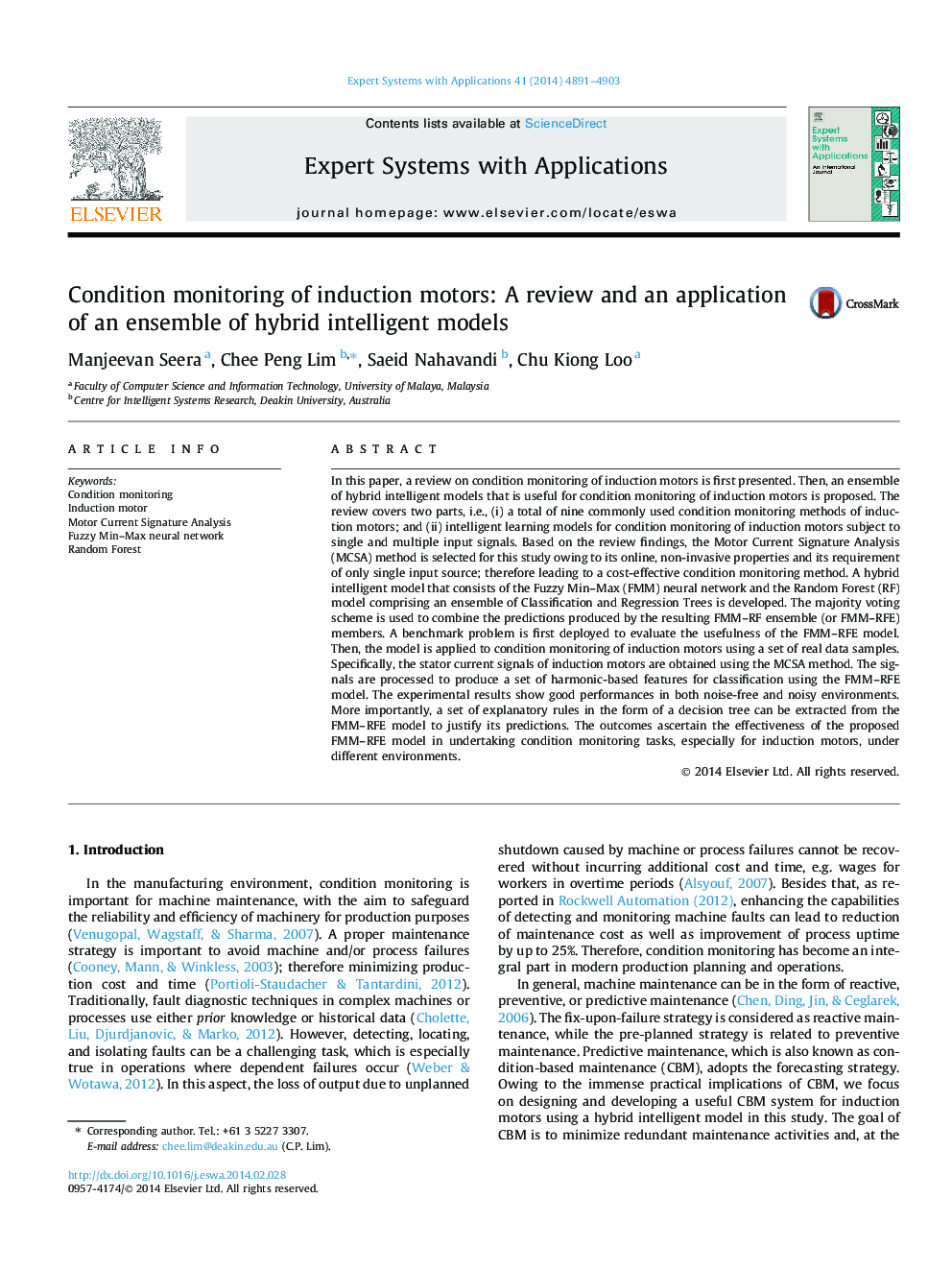| Article ID | Journal | Published Year | Pages | File Type |
|---|---|---|---|---|
| 386269 | Expert Systems with Applications | 2014 | 13 Pages |
•An ensemble of hybrid intelligent models is applied to condition monitoring tasks.•A review on condition monitoring of induction motors is presented.•The proposed model is able to learn incrementally and explain its predictions.•The results ascertain the usefulness of the model for condition monitoring tasks.•The knowledge base is presented as a decision tree for interpretation by users.
In this paper, a review on condition monitoring of induction motors is first presented. Then, an ensemble of hybrid intelligent models that is useful for condition monitoring of induction motors is proposed. The review covers two parts, i.e., (i) a total of nine commonly used condition monitoring methods of induction motors; and (ii) intelligent learning models for condition monitoring of induction motors subject to single and multiple input signals. Based on the review findings, the Motor Current Signature Analysis (MCSA) method is selected for this study owing to its online, non-invasive properties and its requirement of only single input source; therefore leading to a cost-effective condition monitoring method. A hybrid intelligent model that consists of the Fuzzy Min–Max (FMM) neural network and the Random Forest (RF) model comprising an ensemble of Classification and Regression Trees is developed. The majority voting scheme is used to combine the predictions produced by the resulting FMM–RF ensemble (or FMM–RFE) members. A benchmark problem is first deployed to evaluate the usefulness of the FMM–RFE model. Then, the model is applied to condition monitoring of induction motors using a set of real data samples. Specifically, the stator current signals of induction motors are obtained using the MCSA method. The signals are processed to produce a set of harmonic-based features for classification using the FMM–RFE model. The experimental results show good performances in both noise-free and noisy environments. More importantly, a set of explanatory rules in the form of a decision tree can be extracted from the FMM–RFE model to justify its predictions. The outcomes ascertain the effectiveness of the proposed FMM–RFE model in undertaking condition monitoring tasks, especially for induction motors, under different environments.
